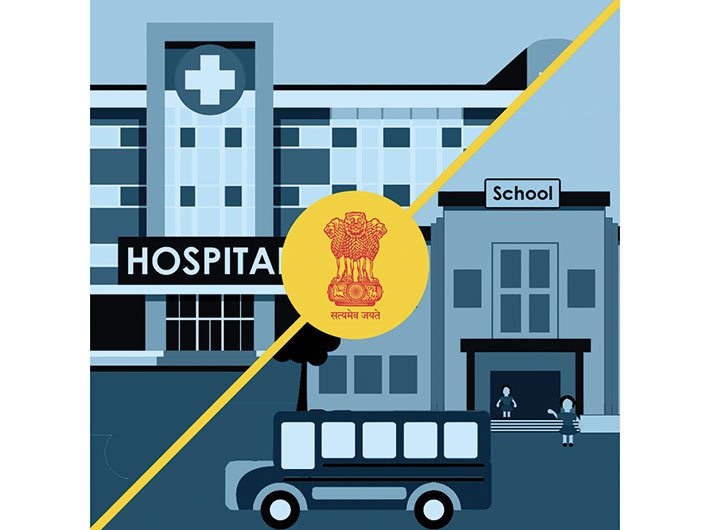If the vocal middle class has a stake in it, the quality of services at government schools and hospitals will improve
It happens in the US, UK and many other developed countries, then why not in India? The word ‘sarkari’ is scary enough for the Indian middle class, leave alone the elite. Even as the admission season approaches there are kilometre-long queues outside the country’s best private schools. Government-run or public schools on the other hand stare at blank walls – their dismal infrastructure and limited teachers make them attractive to the poor only. Similarly, overcrowded government hospitals are not even the last option for the majority.
This doesn’t mean that the private sector doesn’t exist in developed countries. It is very much there like in India, but being extremely expensive, it is the sole reserve of the ultra elite. Moreover, with their world-class infrastructure facilities and quality service, public schools and hospitals are the first choice of the masses.
Then what makes the public sector in healthcare and education so hopeless in India? One of the reasons is meagre government spending to strengthen the infrastructure. A NITI Aayog report says, the spending on education by both the centre and states is close to 3 percent of GDP, which is less than the world average (according to World Bank) of 4.7 percent. Similarly, we spend just 1.16 percent of the GDP on health, whereas our neighbour, Sri Lanka, spends four times more.
Think
Affordable and quality service to all citizens
. . .
Curb the growing monopoly of the private sector
. . .
If the vocal middle class has a stake in it, the quality of services at government schools and hospitals will improve
There have been efforts by the Indian government to make public education and health sectors all inclusive, but they get lost in shoddy implementation. For example, the Right to Education (RTE) Act, 2009, which envisions compulsory and free education to children, makes it mandatory for private unaided schools to reserve 25 percent of their seats for the students from the economically weaker backgrounds. A necessary step indeed, but there have been many instances where the private schools have refused to admit students under the RTE due to non-payment of fees of such students by the government. Also, such students face huge adjustment problems in private schools: their classmates come from homes that are well-off and enjoy many advantages they can’t dream of. Moreover, the Act in a way is making an effort to make private schools accessible to the poor, whereas the aim should be to improve the infrastructure of state-run school in the first place.
In the same way, Ayushman Bharat, a health insurance scheme aiming to provide Rs 5 lakh per family annually, is making all the necessary efforts to bring world-class healthcare to the poor. But its implementation is mired in controversies.
In such a situation, what can we do? One idealist scenario: let’s have only public schools and hospitals throughout the country. Then everyone – the rich and the poor – will go there, and the government will be forced to improve its quality and infrastructure. The private sector can co-exist for limited kinds – specialised or emergency – of services. Remember the laudable move by the district magistrate of Chamoli, Swati S Bhadoriya, who enrolled her son in a nearby anganwadi centre? The Delhi government’s initiative of increasing its budget on education and improving the infrastructure, cleanliness and quality of education of government schools offers a ray of hope.
Moreover, capping stent prices at Rs 35,000 and opening up of more and more Jan Aushadhi centres (generic medicine stores) is a good start.
Where there is a will, there will be ways.
Reality check
India suffers from the problem of high population numbers, which is also the root cause of the ever increasing gap between the ratio of doctors and patients and teachers and students. As explained earlier, there are Acts and there are efforts but corruption and shoddy public delivery services kill noble intentions.
(This article was published in January 15, 2019 edition)



